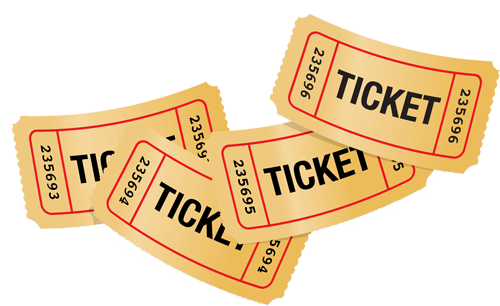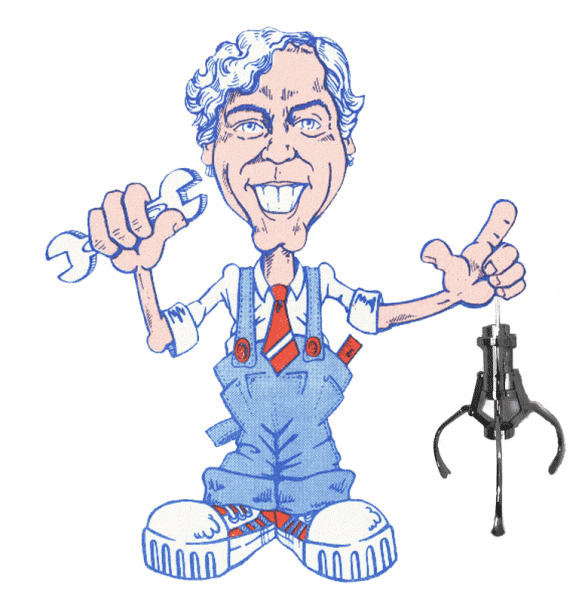
 Here’s the Ticket!
Here’s the Ticket!
Deltronic Labs Ticket Eaters and Ticket Centers – TT2000 – An Easy Fix to a Common Problem
(Dave Lohr, Regional Manager, Alpha-Omega Amusements)
We operate many TT2000 ticket eaters and they get a lot of use. Every time there is a ticket jam (or something other than tickets are fed in), there is additional wear and tear on the harness that goes to the bar code reader board. The most common symptom is that the ticket eater will eat the tickets, but not count them properly and then not count them at all.
The simple solution is to replace the harness when a ticket counting problem is discovered. At every location we keep a couple of harnesses in stock as spares. The cost is only $7.35 each and our part number is PDEL-CABL-BARCOD. We place a 4 letter code in front of the manufacturer’s part number to keep things simple. It is very important to keep the ticket eaters in operation and replacing a worn harness is so much easier than trying to repair it on-site, especially during a busy Saturday or holiday.
What is a Game Technician’s Most Important Tool? (Paul Sawinski, Alpha-Omega Amusements Manager)
Paul Sawinski has surveyed his technical crew and reports that the most useful tool is a small flat tip screw driver. All of the technicians and managers keep one in the top pocket of our company shirts. It is used multiple times during every shift to keep the games area running smoothly:
- For removing debit cards that get jammed in the kiosks
- For removing ticket jams in the ticket eaters
- For removing tickets that jam in ticket dispensers
- For unjamming tokens from token chutes
- For adjusting switch arms
- And lastly for tightening small flat head screws (what it was designed for)
What tools and parts do you recommend that a game room technician should carry in a small tool pouch?
Here is a list that all of the Alpha-Omega Amusements Technicians are encouraged to have:
LIST OF PRIMARY TOOL BAG TOOLS
- Tamper proof torx bit set

- Set of Allen wrenches, metric & standard
- Nut driver set
- Phillips screwdrivers, #1 & #2
- Flat blade screwdrivers
- Needle nose pliers
- Slip joint pliers
- Diagonal wire cutter
- Wire stripper
- Portasol cordless soldering iron
- Spool of solder
- Electrical tape
- Small assortment of screws, bolts and nuts
- Leatherman multiple belt tool
- Small assortment of heat shrink tubings
- Multimeter
- Small knife
- Scissors
- Tape measure
- De-soldering tool
- Small assortment of wires
- Alligator clips
- Crescent adjustable wrench
Another Example Why Loc-Tite is Imporrtant (Jon Wilkinson, Alpha-Omega Amusements Technician)
We have 2 Down the Clown games and each game has 3 motors that raise the targets after they are dropped. Every motor has had the mounting screws either fall out or frequently become very loose. It is very time consuming to keep tightening them at least on a weekly basis. We must have missed a week and this resulted in us having to replace one of the ball gate linkages because it was torn up when a motor was flopping about. Four months ago I put a generous portion of Loc-Tite onto every motor screw that was loose or replaced at that time. I recently checked the motors and all of the screws are still tightly in place and there have been no service calls regarding this issue.
How to Easily Change a Bad Shaft Gear (Black Cog) on a Crane (Steve Camarota, Alpha-Omega Technician)
We all have cranes on location. There comes a time when we need to change a shaft gear, or the correct description, black cog. Here is a quick way to change one gear with only 4 tools on hand:
- The most important tool required is a Mini Puller. It is used to quickly and easily remove stubborn gears, bearings, pulleys and other press-fit items.
- You will need one Allen wrench size 5/64 to remove the set screw.
- Mallet. A tool resembling a hammer, but with a large head. When using Mallet, tap softly on socket that is placed over the gear until the new gear reaches the rough section on propeller shaft and motor shaft pinion. Don’t forget to insert and tighten-up the set screw on the new gear. I always apply some white grease on motor shaft pinion.
Wiring a Card Swipe Reader to a Barron Game (Ramon Vivar, Senior Technician, Alpha-Omega Amusements)
Kiddie rides and other games manufactured by Barron Games have a unique kind of electronic circuitry for the way the crediting is performed. Practically all the games we use credit up by shorting the credit line to ground momentarily. Technically, the game board is looking for a pulse transitioning from “high” to “low”. This is easily performed by a coin switch; the “Common” terminal connected to ground and the “Normally Open” terminal connected to the credit line. Each debit card swipe system does it the same way; an internal relay contact closes when you swipe the card and that does the job.
With the Barron Kiddie Ride however, the credit line is connected to the Normally Closed side of the coin switch and credit is given when the switch opens. So it is the reverse process of transitioning from “low” to “high”. If you try to credit up the traditional way (using Normally Open), the machine will credit up and play but the game will keep playing non-stop until you physically turn off the machine.
This presents a challenge to a card swipe system installer, especially with Embed. On Embed, you have to solder an additional wire internally to pin 31 of the 40-pin connector of the controller and then use the end of that wire to connect to the credit line of the machine. A 10k ohm pull up resistor needs to be connected to that same line with the other end connected to the 12 volt supply.
So far, this is the only US marketed machine that I know of that needs this modification. However, during my recent trip to Vietnam, I encountered one more Chinese made Kiddie Basketball game that required the same modification. It is quite predictable that we will come across other games that are credited up from ‘low’ to ‘high’ so we should be aware.




